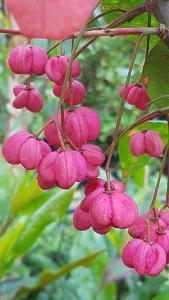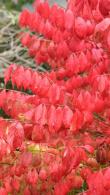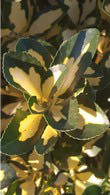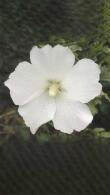Euonymus Europaeus Spindle Tree
1. Add items to basket
2. Go to the basket
3. Enter your postcode in Delivery Price Check
To check delivery cost add your plants to basket, then you can type your postcode in our Quick Delivery Price Check.
Euonymus Europaeus Spindle Tree
The Euonymus europaeus is commonly called the Spindle Tree because its colourful and bright wood was used in the construction of spindles and pipes. Many believed that the tree’s wood had mythical qualities that created inspiration, blessings and purification. It was commonly used to also make toothpicks, knitting needles and skewers. Gunpowder manufacturers also included the wood as a key ingredient in gunpowder. The oils obtained from the tree were also a common component used in soap making. Today, charcoal produced from the tree is a favourite for sketch artists.
The Spindle Tree is a favourite choice of gardeners to be grown as a shrub or hedge plant. It reaches a height and width of around 6 to 9 meters when fully grown. Species live 100 years or more. During the tree’s early life, its bark appears a deep dark green but as the years pass the bark turns exceptionally dark. The mature shoots of the plant have a unique square shape. When shoots first appear they are round but upon maturity the squareness becomes more pronounced and eye-catching.
In May and June, the Spindle Tree produces a bevy of deep, dark pink buds that appear in clusters. The small buds open up to create soft pink blossoms. The blossoms are adored by the honeybee.
After flowering, bright pink fruits develop on the tree. Upon maturity, the fruits burst to reveal orange seeds. Many say that the seeds bear a striking resemblance to popcorn. Historically, the fruits were often boiled and used to make dyes which were utilized for a variety of things such as dying cloth or wool. The orange seeds produce orange dye and boiling the fruit casing creates pink dye.
The Spindle Tree has good autumn colour. The leaves tend to turn vivid yellows and reds creating a blazing show before dropping.
The Spindle Tree prefers a planting location that is shady or partially shady which makes it an ideal choice for any woodland garden setting. It does well when planted beneath large shade trees where it can receive dappled sunlight. Even with an affinity for shade, the Spindle Tree will also grow in full sunlight.
Ideally the tree prefers slightly acidic soil but will tolerate other, more alkaline conditions. It grows best in well-draining moist soil, but can withstand periods of drought. The tree is also tolerant of moist clay.
The Spindle Tree makes an ideal addition to any garden, not only because of its eye-catching appearance and hardiness, but also because of its historical significance.













